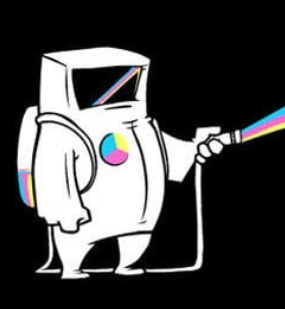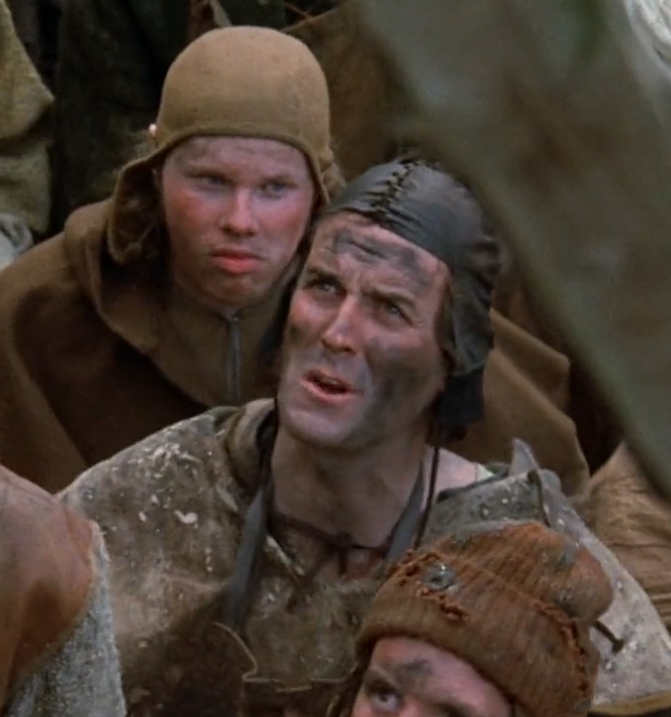When we look at the sky, there is a line where there is way more stars than usual. This line goes all the way around the sky. This was called the milky way by the Greeks because it was like a road sparkled with milk drops. At some point, we deduced that we were in a group of stars arranged in a flat disk. Later, we realized that some weird space clouds (nebulae) were much further away than we thought and were actually other huge groups of stars like our own that we named galaxies, still after milk.
There are more details me course. Even along the line in the sky drawn by the milky way, there is one side where there is much more stars and dust than the other. We deduced that we were at the edge of the disk and the bright region was the center of our galaxy. Also, the amount of gas and dust that block certain types of light that teach us that our galaxy has arms.
That’s definitely the more PG-13 version of why the ancient Greeks called it the Milky Way lol. Alternate version from Wikipedia:
In Greek mythology, Zeus places his son born by a mortal woman, the infant Heracles, on Hera’s breast while she is asleep so the baby will drink her divine milk and thus become immortal. Hera wakes up while breastfeeding and then realizes she is nursing an unknown baby: she pushes the baby away, some of her milk spills, and it produces the band of light known as the Milky Way.
That is surprisingly tame by ancient Greece standards.
Like the birth of Aphropdite, where Cronus cuts Uranus’ dick off and throws it in the sea, and she grows out of the foam it leaves behind.
Not in the famous painting for some reason lol.
That’s a lot more PG-13 than I thought it was gonna be
Zeus pounds three cans of red bull and throws some Playboy flicks on his CRT, proceeds to spray galactic milk all over the universe
That’s a very specific metaphor.
I didn’t know the story, thanks a lot!
Great explanation, I finally get it! thank you
Great explanation, although I want to clarify that not all nebulae are galaxies. Nebulas are massive clouds of dust and gas that are found within galaxies. Other galaxies were previously thought to be nebulas in space outside of the Milky Way, called extragalactic nebulae. However, in the early 1900s it was proven that these were actually other galaxies and not nebulas, so the term is no longer used.
While there are nebulae in other galaxies, they are not easily visible to us, so the word nebula generally refers to those contained within the Milky Way.
Thanks! I added “some nebulae” to remove any misunderstanding
Which other galaxies are named after milk?
The word galaxy itself comes from the old Greek word for milk, so all galaxies are named after milk.
Cool. I was trying to figure out if there was a bovine with the root word Andromeda in it. Because there are dromedary animals. But even do that only got me as far as one Galaxy.
How can you see your house if you are inside of it?
Fun fact, in german there’s a saying that goes “to not see the forest because all of the trees” (which in english would be probably called “chess blindness”)
That’s a common saying in the US as well. Never heard of chess blindness, though.
Didn’t know that. TIL, thanks
Edit: how do you say it? “I can’t see the forest because of all the trees”? That would be the literal word by word translation coming from german
“you can’t see the forest for the trees.”
Or sometimes “you can’t see the woods for the trees”
I have heard it with that exact wording many times. Or maybe, “can’t see the forest through the trees”
Lived from Virginia to Ohio, Indiana Illinois and Michigan, also heard “can’t see the forest FOR the trees” which I always figures was a more colloquial change.
I haven’t heard that exact phrasing before, and as a native English speaker born and raised in California, that wording sounds a little awkward to me. It does kind of sound like something my mom, who is from the east coast, would say. 😆
Don’t get me started on pop vs soda…
I say soda, wife says pop. We have a little exchange of “correcting” each other a couple times a month.
The English phrase is “missing the forest for the trees”
Not quite the same as chess blindness. Possibly the opposite. It basically means: being unable to see (or ignoring) the bigger picture because you’re too focused on minor individual details
You can’t really. At least not well enough to know for certain what it looks like from the street.
Wow. Amazing. Like what kind of an answer is “if you’re inside a car you can see the car”. This doesn’t answer a damned thing!
We don’t “know” what kind of galaxy we are in because we’ve never seen it from the outside. That would be impossible with our current technology.
Instead we have made very smart evidence-based assumptions as to how our galaxy looks.
What we know is that we are definitely in a galaxy because the general structure of the universe precludes such a conclusion. The extreme vast majority of matter is condensed in structures that are very uniform, we call them galaxies, therefore we must also be in one.
On a very clear night in certain parts of the world we are able to see in the sky a large elongated collection of stars which the ancients called the Milky Way because it resembles milk flowing down a smooth surface or something along those lines. What we currently believe is that that elongated formation of stars is an arm of one of the spirals that comprises our galaxy. We are also able to look at other structures using telescopes in our galaxy for example we have determined that we have a supermassive black hole in the center as many other spiral galaxies do as well.
So to answer your question we cannot see the Milky Way galaxy as a whole only certain parts of it and we’ve been able to draw conclusions by seeing other galaxies.
All the other comments here making neurotic epitaphs and idiotic analogies about how seeing something from the inside is the same as seeing something from the outside is just dumb and pompous if you don’t know the answer don’t say anything.
We do know quite well what our galaxy looks like thanks to great advances in astronomy. To use your car analogy, it would be like using “X-ray”technology to map the exterior from the interior and get a reasonably accurate picture of the shape of our car.
https://www.astronomy.com/science/how-we-learned-the-shape-of-the-milky-way/
Wait we can know what it looks like though. They can plot the distance and position of the stars and then they will have a model of its shape as a point cloud.
The original question is very vague and in general difficult to answer without asking additional questions to clarify so I answered the question in the spirit not in the letter.
We’re on the Earth — how do we see the Earth? By seeing other parts of the Earth that aren’t ourselves. The same is somewhat true for the Milky Way. And like on Earth, you can’t see the whole thing without leaving it, because we only get to see the stuff that isn’t blocked by other things.
These analogy answers are weird and not helpful.
OP, they look through telescopes and figure out how far away the stars are. They record it in a little diagram on a computer and eventually they get a good idea of what it looks like from the outside.
In case you mean pictures like this; http://upload.wikimedia.org/wikipedia/commons/8/82/Milky_Way_Galaxy.jpg - they are not actually images of the Milky Way. As you’ve guessed, we can’t directly see it in its full spirally goodness from the inside. Instead, these pictures are either artist’s impressions based on scientific understanding, or pictures of different galaxies that are reckoned to be pretty similar to the Milky Way.
Though someday we may find a gigantic space mirror that allows us to see our own galaxy by zooming in on it enough.
The space mirror will be formed by some weird gravitational pattern that happens to send light back the way it came. Not like literal glass floating in space. Just some kind of optical distortion that acts as a mirror.
But we’ll be looking at our galaxy a long time ago.
Over 26000 years ago if the mirror was placed at the very edge of the milky way. I wonder how many light years away the mirror would have to be to fit the whole image of the galaxy inside it.
I just can’t even begin to get my head around those numbers, I am a tiny insignificant ant.
It would more be a matter of the diameter of the mirror. It could be one inch outside the galaxy and give us a view of the galaxy.
Because we are inside it. You can literally just look up at the sky and there it is! It does help that we are more toward the edge of it, than towards the center.
As for like a zoomed out image of the entire thing? Math as well as microwave and other radiation maps taken with powerful telescopes and instruments either on Earth or in orbit. Most of the images of space you might see are doctored in a way to make them look better to human eyes; they were actually constructed from data that wasn’t necessarily visual. All the different colors of a rainbow nebula, for example, mean something, and the nebulas do not actually look that cool when seen with the naked eye.
To add to that about the nebulas, they don’t look like they do I’m scifi either. Gas clouds or plasma clouds visible to the human eye. If you piloted a ship through most nebula it would look no different than the rest of space around you. Space is BIG yall
The same way as I can see most of my body even though I am inside it. Indeed, without a mirror I cannot check whether I got a drunk tramp stamp tattoo last night, but I can still see most of my body and get a decent idea on the shape it as, especially when comparing with other’s people bodies
We do see it, just not all of it since the milky way is in the way.
The same way I see the hood of my car while sitting inside of it.
If you’re standing inside a cloud you can still see the cloud.
Same way you can see your living room
Imagine being on the surface of Saturn. You’d see the rings. I mean, you’d be dead, but you get my point I hope. If not, picture Saturn being the size of rock, but the rings were still there. You’d still see them, yet you’d be “in” Saturn.
Epic Spaceman made a video about it where he showed how it looks from an outside perspective and our point of view while explaining a bunch of other things.
Your question needs rewording because as its written right now the answer would be that you just look up at night and all the stars you see, are the milky way.











